Dositejeva 1b, Negotin
Dositejeva 1b, Negotin
Stevan Stojanović Mokranjac was a Serbian composer, choir conductor, excellent connoisseur of traditional folklore, music pedagogue responsible for introducing the Serbian national spirit into artistic music. He was born in Negotin on January 9, 1856. In May 1934, the first information about the house where Mokranjac was born and where he spent the first days of his life. It was a completely dilapidated house in the very center of the city. Restoration began in 1964. The house is distinguished by the more modest characteristics of a traditional Balkan village house.
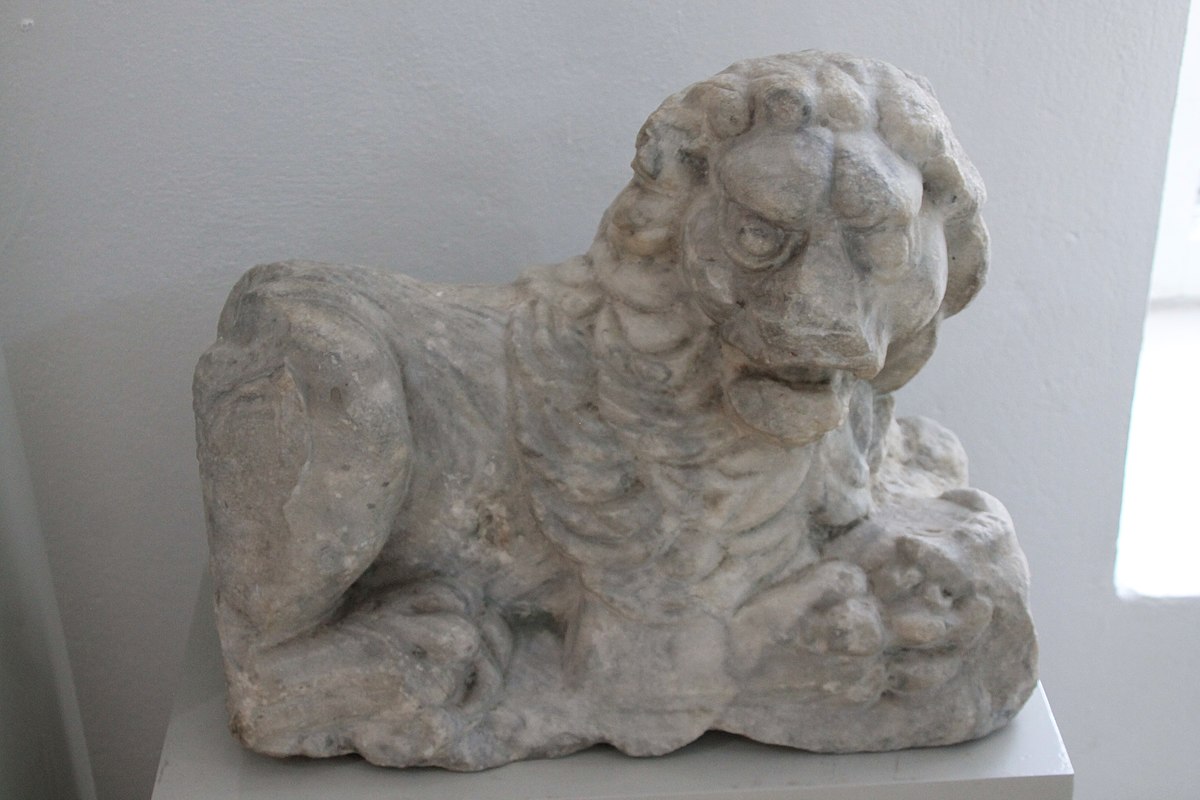

The works of Stevan Stojanović Mokranjac unequivocally represent one of the pillars of Serbian culture. Thanks to his numerous productive activities in the fields of composition, performance, pedagogy, and ethnomusicology Mokranjac is considered the most prominent figure in the entire history of Serbian music culture

This photograph from 1880 shows Mokranjac in the company of colleagues from the Conservatory in Munich you can see a lottery ticket organized in 1879 to support Mokranjac’s education abroad, as well as the decision of the Committee of the Belgrade Singing Society to grant a scholarship to Stevan Mokranjac...

Here, there are photographs of Mokranjac as a member of the Management Board and choirmaster of the Serbian-Jewish Singing Society in Belgrade in 1889. From the same year, there is also the contract regarding Mokranjac’s appointment as a choirmaster and singing teacher in the Belgrade Singing Society
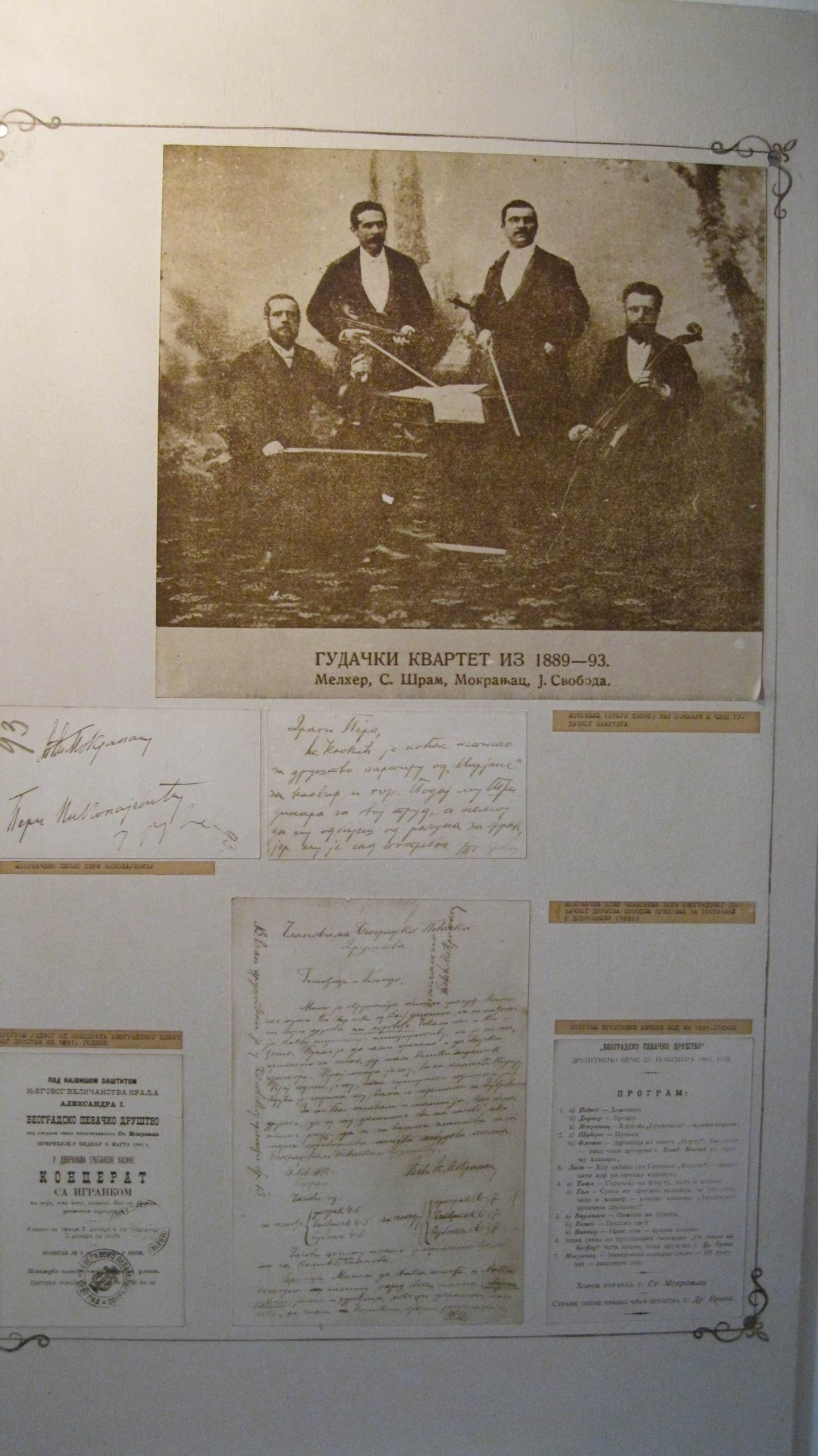
The first Serbian String Quartet was formed in 1889 at the initiative of Stevan Mokranjac, in which he played the second violin. The other members of the quartet were Ferdinand Melher (first violin), Stevan Šram (viola), and Josif Svoboda (cello). The photograph of Mokranjac, Melher, Šram, and Svoboda is displayed...
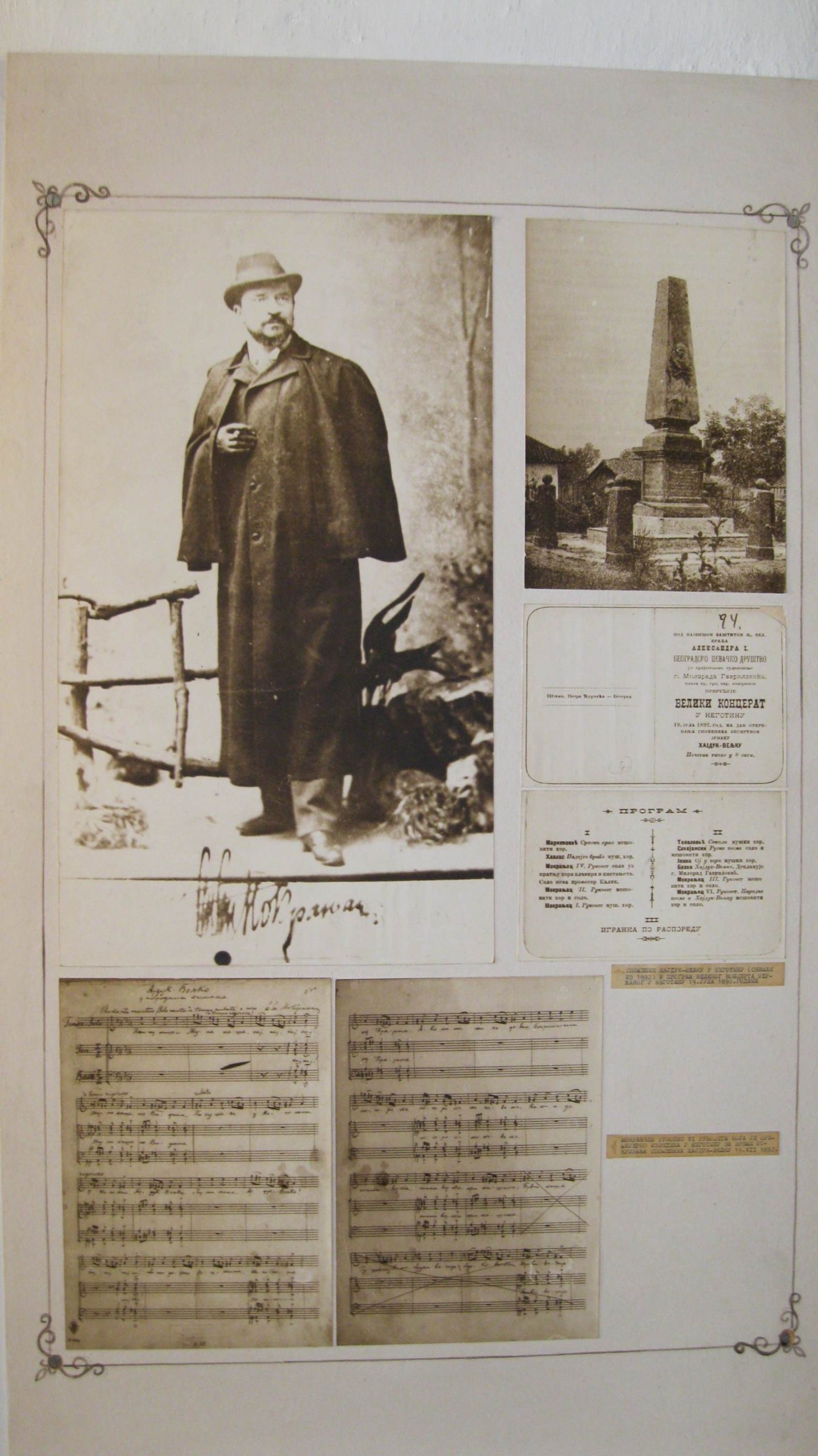
Here are the photographs of the monument at the site of Hajduk Veljko Petrović’s death from 1892, as well as the program of a grand concert held in Negotin on July 19, 1892, in honor of the monument’s unveiling. Also displayed is Mokranjac’s manuscript “VI Rukoveti,” which was premiered at...
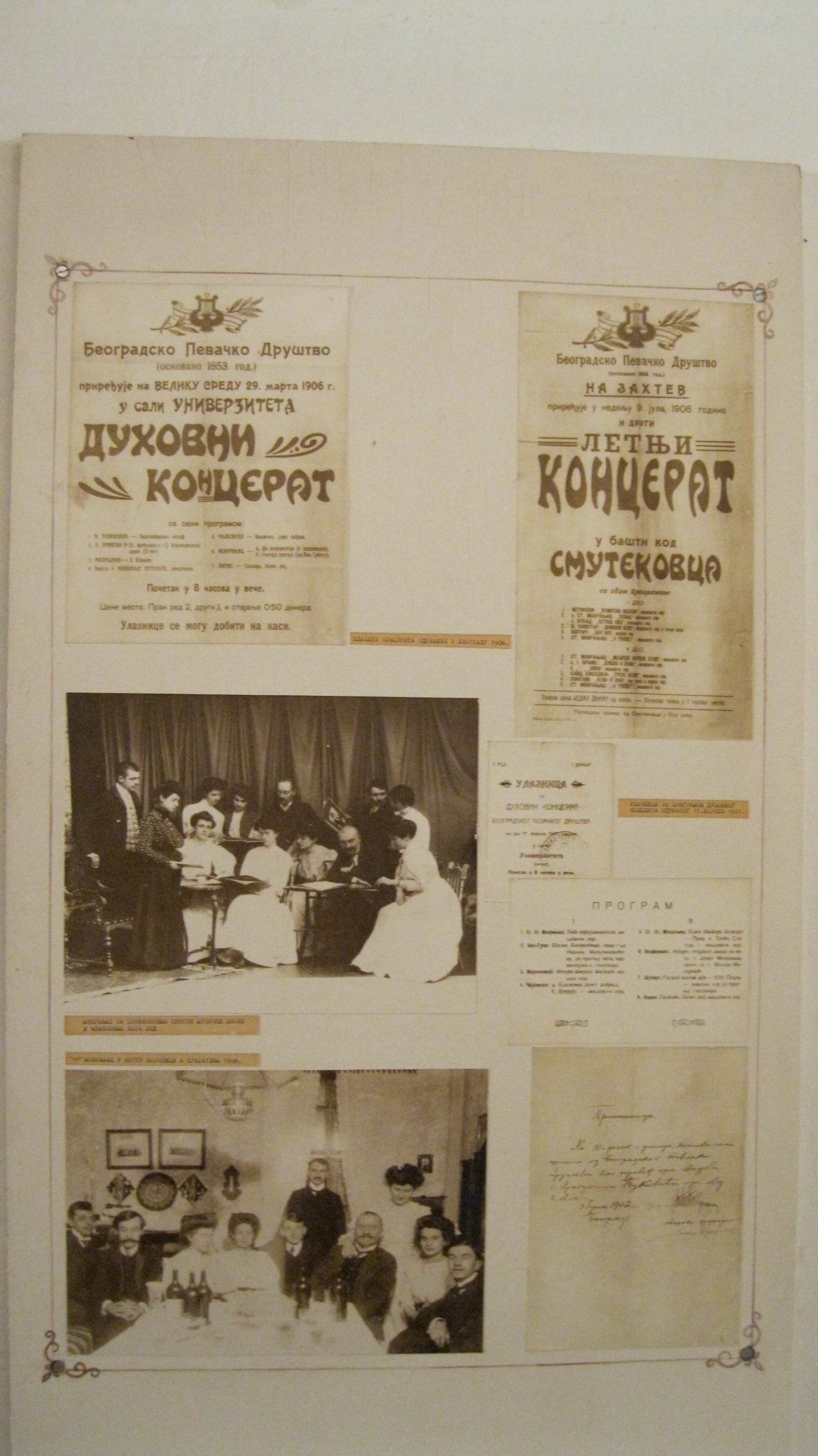
This panel displays photographs of the founders of the first Serbian Music School: Stevan Mokranjac (the first and its lifelong director), Stanislav Binički, and Cvetko Manojlović. It also features the building in Belgrade where the school was originally located at the time of its establishment in 1899. There is a...

This panel features photographs of Mokranjac in his study from 1912, on the terrace of his apartment from the same year, a family photograph from 1913, as well as the house where he lived in Belgrade In addition to the photographs, the panel also displays the last school document of...

Here are photographs of Mokranjac with his family leaving Belgrade in August 1914, as well as the bed in which he spent his last days in Skopje in September 1914. The panel also features a poster of the artistic memorial event held for Stevan Mokranjac in Belgrade in 1919, and...

This panel displays photographs of Mokranjac’s funeral procession from Skopje to Belgrade in 1923, as well as a photograph of Marija Mokranjac. Additionally, there is a letter written by Marija Mokranjac addressed to the Belgrade Singing Society for the dedication of the monument at Mokranjac’s grave in 1926.

Displayed is Mokranjac’s study, where the authors aimed to recreate the atmosphere and environment in which the renowned composer lived and worked. It has been reconstructed with original furniture and personal belongings of the artist

Before you is a room with an ambient of a resting room with a piano. Displayed is a semi-concert piano on which Mokranjac worked for twenty-five years with the Belgrade Singing Society

Before you is a dining room, and among the authentic items, you can see an icon of Saint Nicholas painted by Uroš Predić as a gift to his niece Mica Mokranjac in 1889. There is also a silver candlestick, a brass samovar brought by Mokranjac from Russia from a guest...

In 2021, a memorial room dedicated to Momčilo Mokranjac was opened within the premises of the Mokranjac House. Momčilo Mokranjac, a chemist, professor, and toxicologist, is one of the greatest Serbian intellectuals who acquired education in France during and after the Great War

Prof. Mokranjac was awarded prestigious recognitions from French academic institutions as well as other institutions such as the Ministry of Public Health of the Republic of France for his scientific contributions and research in the field of public health He was elected a corresponding member of the Paris Academy of...
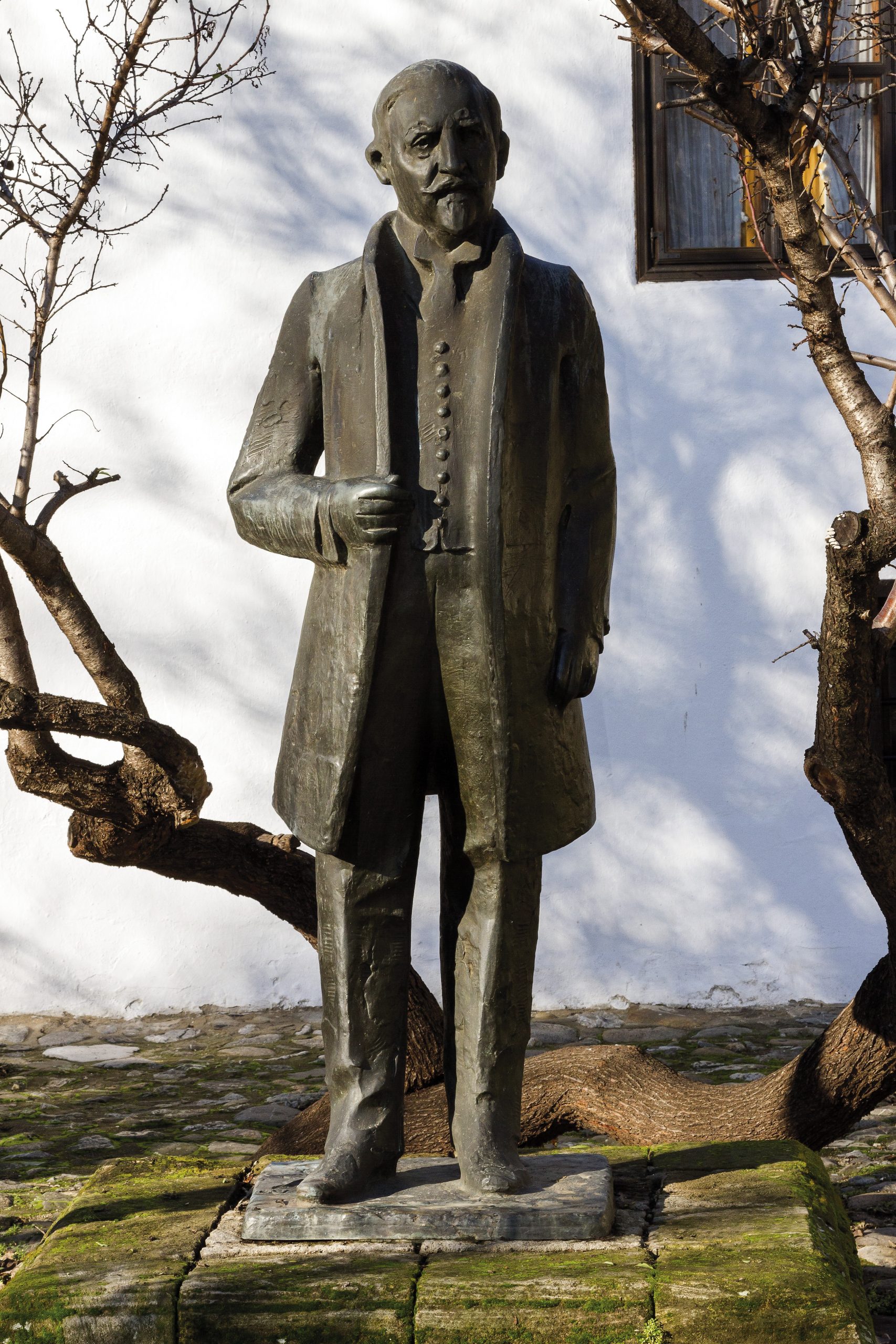 Pokretna kulturna dobra Muzeja Krajine u Negotinu
Pokretna kulturna dobra Muzeja Krajine u Negotinu
In front of the house, there is a bronze sculpture of Stevan Mokranjac, created by Nebojša Mitrić. The monument was erected and ceremoniously unveiled on September 20, 1980, as part of the Days of Mokranjac festival In memory of Stevan Stojanović Mokranjac, the town of Negotin has been hosting traditional...